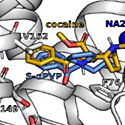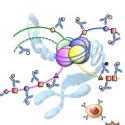Featured Paper of the Month – May 2023
Published in PNAS with contributions from Carl Lupica, Alexander Hoffman, and Michael Baumann of the NIDA IRP.
Here we demonstrate that various DAT inhibitors can be distinguished based on their in vitro binding kinetics, whereby the dissociation rate (i.e., Koff) of a drug from DAT in vitro predicts the duration of its stimulant effects in vivo.










